DARK SKY HAPPENINGS - January 2022
Moab
UT (at City Hall)
38O34’ N Latitude
109O33’ W Longitude
4048 ft - 1234 m |
Identifying UFOs
by NASA Night Sky Network
Sunrise-Sunset
(The time of sunrise and sunset assumes a flat horizon. Actual time may
vary depending upon the landscape.) |
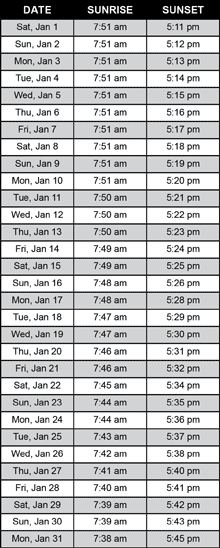 |
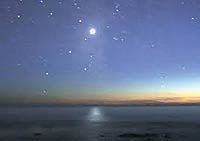 |
| Venus shining bright and low has been reported many times as a UFO. |
Do you think you have spotted a UFO? We have some tips to help you identify that unidentified light in the sky below. Many folks have spotted something in the sky that may not be able to easily explain at first, but careful consideration and investigation will often help you to both identify that mystery light and help you become a better stargazer.
Venus is one of the most confused objects in the sky, especially when it is low to the horizon. Sirius and Jupiter are also often reported as UFOs, as well as Mercury. When bright planets are in alignment near the horizon they can appear to be a formation of “strange lights”!
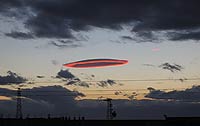 |
| Image of a classic saucer-shaped lenticular cloud from Damascus, Syria. |
Other “UFOs” can be rocket launches, comets, military jets, weather balloons, sounding rockets, satellites, meteors and fireballs, experimental craft (if you are lucky) and odd clouds (such as lenticular clouds) and be confused, as well as artifacts from photographs that are actually lens flare or aberration. Remote control aircraft can also be confused for a UFO; in fact some models explicitly look like “flying saucers” just to make things tricky! If you have a good description of the object, as well as the date and time, you may want to try using a planetarium software such as Stellarium to plot the sky at the indicated time and date.
If you’re an amateur astronomer, you are probably asked about aliens and UFOs quite a bit. Use this opportunity to turn their curiosity into a new hobby. So, how do you identify UFOs when asked? Be polite and patient. If the “UFO” is visible and the person inquiring is there in person, you can turn your telescope on the object to reveal the truth, This often does not happen, of course. Be aware of recent meteor showers, as well as common phenomena in your area.
With these tips, you are now well-armed to help turn a report of an UFO into an IFO (Identified Flying Object!) Your visitor may be disappointed that you didn’t see any alien space ships, but their knowledge of the wonders of the night sky will be magnificently increased!
MOON HAPPENINGS
Jan 9 - First Quarter at 11:13 am
Jan 17 - Full Moon at 4:51 pm
Jan 25 - Last Quarter at 6:42 am
Jan 31 - New Moon at 10:49 am |
Moab Dark Skies mission is to promote the appreciation and conservation of Moab’s valuable and rare dark skies. Moab Dark Skies was established by the Friends of Arches and Canyonlands Parks in conjunction with the National Park Service and Utah State Parks Division of Natural Resources
For more information, check out our Facebook page. |
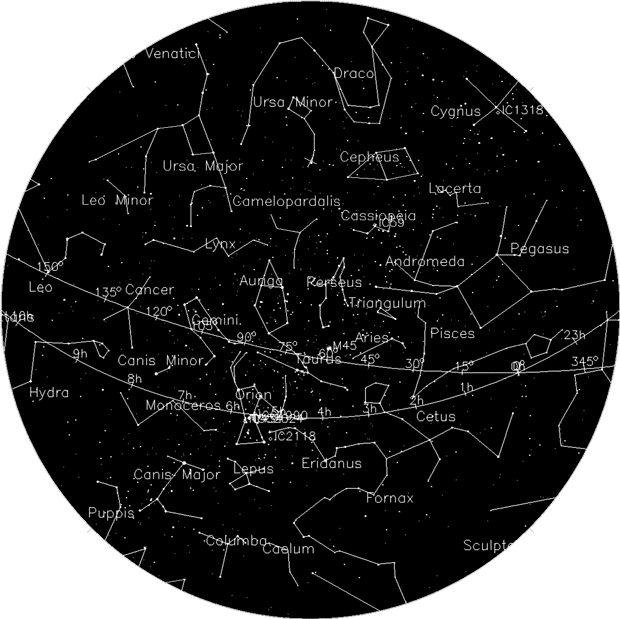 |
There Goes My Hero, Perseus
by Spencer Stokes Dead Horse Point State Park Ranger |
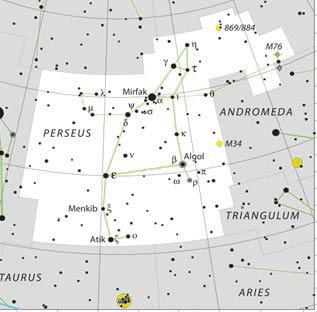 |
| Star Chart by IAU and Sky & Telescope magazine (Roger Sinnott & Rick Fienberg) |
The cold chill of deep winter sets in on the night. A blanket of snow reflects the ghostly light of the many stars hanging overhead. Incredibly bright gems of light adorn the sky, like a crown of jewels splayed across the inky depths of space. The cool air has sucked the moisture out of the sky and cleared the night of clouds. A crystal clear sky, free of all obstructions, is perfect for stargazing. Anyone who would look straight up, almost completely overhead, will see the fascinating constellation Perseus.
Perseus is composed of 19 bright stars. It can be identified easily due to its close location to several other constellations. Perseus is close to Cassiopea and Auriga. It gets its name, and story, from greek mythology. Perseus was a hero in ancient Greek legends. He defeated Medusa the Gorgon and saved Andromeda, a princess, from a massive sea monster. Because of his heroic deeds, the gods placed him in the heavens as a reward.
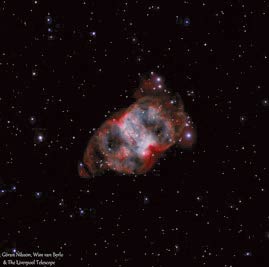 |
| HaRGB image of The Little Dumbbell Nebula (M76). Data from the Liverpool Telescope (a 2 m RC telescope on La Palma) processed by Göran Nilsson and Wim van Berlo. |
The galactic plane of the Milky Way Galaxy passes through Perseus. This means that Perseus has several deep space objects that are great for viewing. There are several bright open clusters, such as The Double Cluster and M34, close to the constellation. The Double Cluster is especially great for binoculars and telescopes. It is so bright it is visible with the naked eye and viewing instruments will resolve hundreds of stars. Another deep space object in Perseus is M76. M76, also known as the Little Dumbbell Nebula, is a small planetary nebula that is only visible with large telescopes in dark skies. There are other deep space objects close to Perseus, but many of them are faint and require specialized equipment to see.
January, on average, is the least cloudy winter month in Moab. The clearer nights and cold temperatures make January a great month for stargazing! Look to the skies and find the great hero Perseus. Use binoculars to find the open clusters and enjoy a sky filled with stars. Just make sure to bundle up and bring hot drinks before looking into the heavens on a cold winter night.
|
|